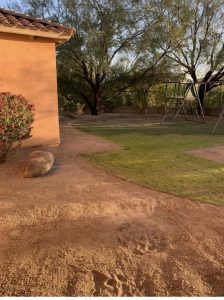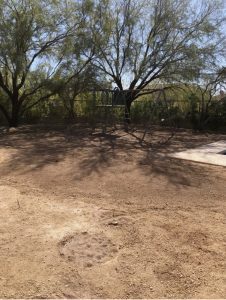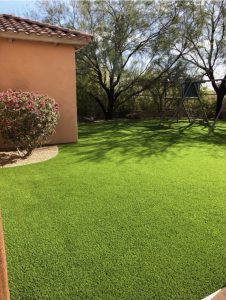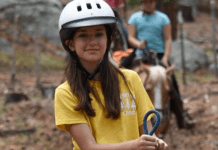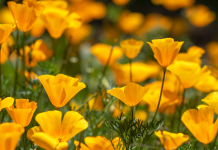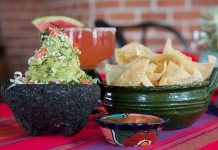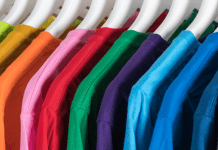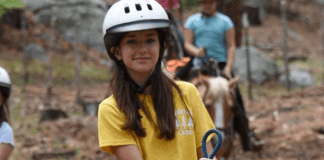Although a messy and costly process, Mary Scot Boyce and her husband, Matt, love their new and, well, “unreal” lawn. A few months ago, the Scottsdale-based parents of two young kids, ages 6 and 9, began discussing removing their grass and replacing it with artificial greenery. The couple wanted to conserve water, were tired of the upkeep, and found it “impossible to keep grass alive and healthy during the summers,” said Matt.
Aesthetics were a draw too. The Boyces like the look of artificial lawns more than real grass. And, as a major added bonus, they said, their new greens “added more square footage to our backyard with more play area/area to run around for the kids.”
The Boyces aren’t alone in moving to synthetic. As families have spent more time at home this past year, many are renovating indoor and outdoor areas. Artificial grass is an obvious consideration for Phoenix families tired of battling with caring for real grass in AZ’s dry climate, not to mention the constant weeding, watering, and mowing.
But like anything else in life, there are pros and cons for artificial greens.
PROS
- Lower maintenance and lower cost over time: Although pricier upfront (estimates range from $6 to $20/square foot) fake grass is less of an investment over time. It’s also less backbreaking and time-consuming for those maintaining their lawns themselves.
- Consistent aesthetic appeal: If you want nice-looking lawns year-round, synethic grass or turf has the upperhand, uh, hands down.
- Better for allergy sufferers: For families with allergy or asthma sufferers, artificial grass is a great option for a less-aggravating outdoor life. Kids can play year-round with a lower chance of itchy and watery eyes, sniffles, and sneezing.
- Eco-friendly: Synthetic grass requires less water, conserving the resource for other uses– not to mention saving you money on your H2O bill each month. Plus, synthetic grass doesn’t require fertilizer, pesticides, or gas-powered tools to thrive.
CONS
- Care is still required: Fake grass does need to be cleaned on a roughly weekly basis (cue messy picnics or outdoor meals; bathroom “accidents”; or arts and crafts sessions gone overboard), to ensure that the yard is bacteria/mess-free.
- May need replacement: Like all good things, synthetic grass does, typically, need to be replaced, though usually not for 15-25 years. Check with your installation company to see what/if they have a minimum durability guarantee and/or a warranty.
- Turf Burn: Athletes or recreationalists who have stepped or fallen onto hot turf know that the burn is real. Research has shown natural grass is typically 20-30 degrees cooler than turf, and 20-50 degrees cooler than artificial grass.
- Potentially harmful? Though the jury is still out, some recent research points to potential toxicity in fake grass due to materials and chemicals some varieties contain (think: something has to make the product green and something has to make it stay upright). If you’re thinking about going the fake route, just make sure to carefully research the quality and type of product you’re getting. For more information on this topic, visit the Environmental Working Group’s page HERE.
Lastly, if you’re seriously considering putting in synthetic grass, know that it’s a messy process for about a week. Although rain is not a big constraint for AZ families, experts say the ideal time to install is usually fall and winter months because they’re drier (rain and turf don’t mix).
Knowing both the pros and cons, the Boyces spent time carefully selecting their installation company, ultimately opting for the highly rated AZ Luxury Lawns, which Matt’s friend referred to him (JNK Landscaping and Pools as well as Artificial Grass Masters also got top ratings on several consumer ratings sites like Yelp). The couple said AZ Luxury Lawns was “fabulous” to work with and made the process entirely “seamless.” They have zero regrets about saying goodbye to their grass and are excited to spend more time in their yard this spring and summer.
No matter how you cut it, or don’t cut it, anything that makes the outdoors more palatable in our climes for you and your family is a blade above the rest, right?
